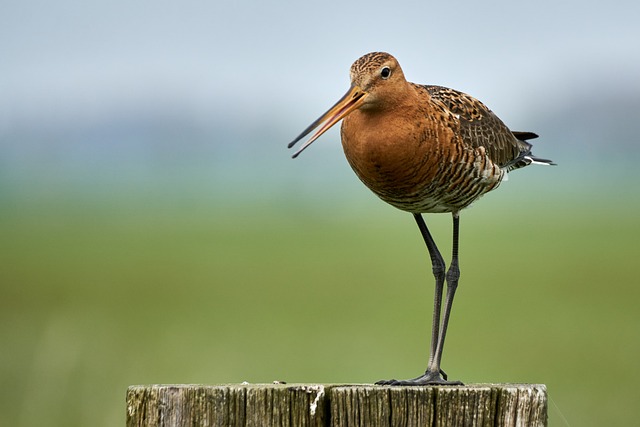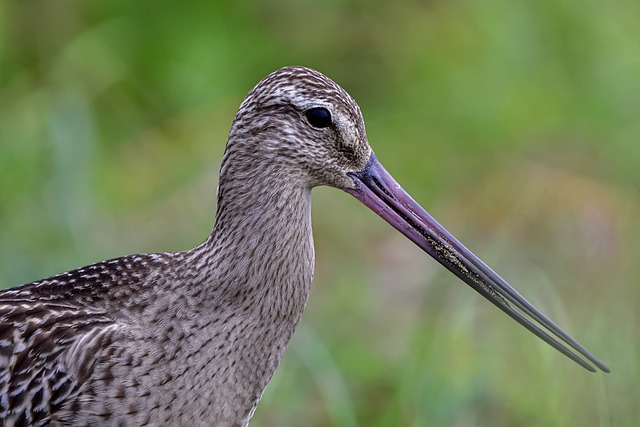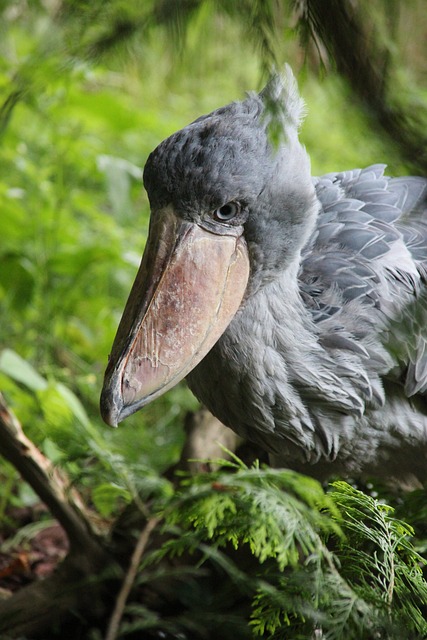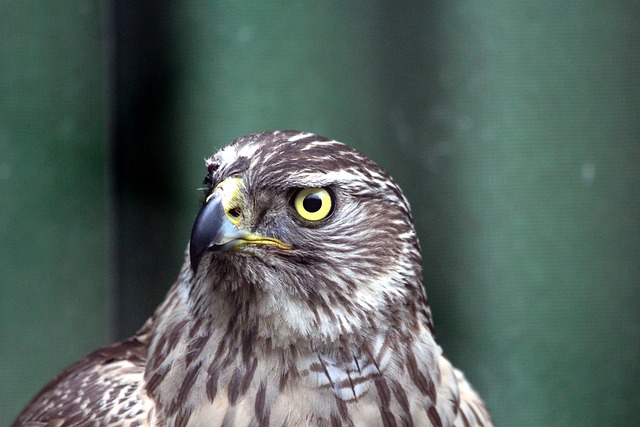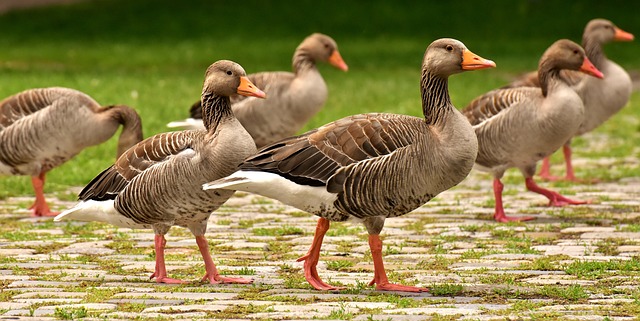The Eurasian woodcock (Scolopax rusticola) is a species of wading bird found across Europe, Asia, and parts of North Africa. It is a fascinating creature that can be seen foraging in its natural habitat during the winter months.
With its distinctive, long-billed silhouette and reddish-brown coloration, the Eurasian woodcock is an easily recognizable bird that is of particular interest to bird watchers.
Introduction
The Eurasian woodcock’s range includes much of the northern hemisphere, stretching from Iceland and Norway east to Siberia and south to northern Africa. In the UK, they are mainly found in the southern half of England and Wales, as well as parts of Scotland, but can also be found across the British Isles. In Europe, the Eurasian woodcock is common, while in Asia, it is found in a more fragmented range.
The Eurasian woodcock prefers damp, woody habitats with a mix of dense cover and clearings. They are often found in woodlands near water, where they can forage among marsh grasses and the understory of trees. They are also found in agricultural fields, bogs, and other grassy areas. In the winter, they roost in these areas, where they can find good cover from predators.

The Eurasian woodcock is an active bird, spending much of its time foraging for food. They have large, dark eyes which they use to locate their prey in the dense understory. While they are mainly insectivorous, they will also eat larvae, worms, and other small animals. They forage in the leaf litter and along the ground, using their long, sensitive bills to probe for food.
The Eurasian woodcock is a migratory species, breeding in the summer in the northern parts of its range and migrating south to the Mediterranean and Middle East in the winter. It is a solitary bird, except during the breeding season when they form loose flocks, or ‘leks’.
The Eurasian woodcock is an important member of the natural environment, playing a vital role in the food chain. It is a shy bird, but its presence is often indicated by its distinctive call, which is a short, low, ‘wewe’ sound. With its unique characteristics, the Eurasian woodcock is an interesting bird to learn about and observe.
Appearance
The Eurasian Woodcock is a species of wading bird that is native to parts of Europe, Asia, and North Africa. They are easily identifiable by their distinctive bodies. The Eurasian Woodcock is medium-sized with a long bill, short tail, and a rounded, somewhat bulky body. The upperparts are a mottled mix of gray, brown, black, and white with a black-and-white striped crown. The underparts are white and speckled with brown. The Eurasian Woodcock also has a white eye-stripe and long, dark legs.
The Eurasian Woodcock is typically between 11 to 13 inches (28–33 cm) in length with a wingspan of around 20 inches (50 cm). On average, the Eurasian Woodcock weighs between 8.5 to 11.5 ounces (245–300 g). The female Eurasian Woodcock is slightly larger than the male, with the female often reaching up to 17 ounces (490 g).
The Eurasian Woodcock is quite a charismatic species, having a wide variety of vocalizations. A distinctive call, known as “roding”, is made by the Eurasian Woodcock during its display flights. This call is a loud, whistling sound that is higher-pitched than the calls of other wading birds. The Eurasian Woodcock also has contact calls as well as a variety of shorter, squeaking sounds that are used when they are disturbed.
The Eurasian Woodcock also has a unique pattern of camouflaging. The mottled pattern of the Eurasian Woodcock’s feathers helps it blend into its environment. This helps it hide from predators during the day and also helps it evade detection when it is searching for food.
The Eurasian Woodcock also has a unique flight pattern. They fly very slowly and low to the ground, using their wings to make irregular, zigzag patterns. This type of flight is known as “roding” and is used by the Eurasian Woodcock to surprise their prey and to escape from predators.
Overall, the Eurasian Woodcock is a distinctive species with a variety of behaviors, features, and behaviors. The Eurasian Woodcock is easily recognizable by its long bill, short tail, and mottled upperparts. It has a wide variety of calls and a unique flight pattern. Lastly, the Eurasian Woodcock has excellent camouflage that helps it hide from predators.
Behaviour
The Eurasian Woodcock is an incredibly fascinating bird with unique behaviors. In order to survive, the Eurasian Woodcock must rely on a number of defensive strategies to deter potential predators.
The Eurasian Woodcock is primarily a nocturnal bird and can be found foraging in the dark for its food. The bird eats earthworms, beetles, spiders, snails, and other small invertebrates. These creatures must be carefully probed from the ground using the woodcock’s long beak.
The Eurasian Woodcock is a migratory bird and will travel long distances to reach its destination. The bird has a strong homing instinct and will often travel in the same direction along the same route every year.
The Eurasian Woodcock has a unique call that consists of a series of low whistles, each lasting a few seconds. The call is often described as sounding like a musical instrument. This call is used to attract mates and to assert the woodcock’s territory.
When startled, the Eurasian Woodcock has an interesting defensive behavior. The bird will fly away, but will take a quick zig-zagging course to confuse potential predators. The bird will then use its sharp eyesight and hearing to locate a safe place to hide.
The Eurasian Woodcock is an incredibly adaptable bird and has adapted to a variety of different habitats. These habitats range from wooded areas to open fields and even wetlands. The bird is also known to take advantage of human-made areas such as parks and golf courses.
The Eurasian Woodcock is a truly remarkable bird and its unique behaviors are just one of the many aspects that make it so interesting.

Breeding
The Eurasian woodcock is a unique bird in many ways, including the fact that it is an exclusively monogamous species. This means that once they pair up, they stay together for life. They also breed during the winter season, beginning in November and usually ending in February, though it can vary between different regions.
The Eurasian woodcock’s breeding process is quite fascinating. Unlike other birds, the male woodcock begins by trying to attract a mate through an elaborate display of courtship. He performs a series of fast maneuvers and loud calls to draw in a female. Once a female is attracted, the male begins to build a nest. This is done by forming a shallow bowl in the ground, lined with a thick layer of sticks and leaves.
The female lays an average of four eggs and the male will take over the incubation, which can take up to three weeks. Additionally, the male will remain dedicated to the female and the eggs throughout the entire incubation period, frequently leaving the nest only to bathe or feed.
Once the eggs hatch, the chicks will remain with the parents for approximately six weeks. During this time, the parents feed the chicks by regurgitating partially digested food directly into their mouths. This process, known as “provisioning,” helps the young chicks grow and become independent.
At the end of the breeding season, the Eurasian woodcock will fly to their wintering grounds, where they will moult and rest before returning to their breeding grounds in October.
The Eurasian woodcock is a rather remarkable species – not only for its unique behavior, but also for its ability to adapt and survive in the face of changing environments and habitats. It is an important species to protect if we want to ensure a healthy and balanced ecosystem. By preserving and protecting their habitats, we can help to ensure the long-term survival of the Eurasian woodcock.
Predators
The Eurasian Woodcock is a curious bird that can be found in most of Europe’s forests. It is a popular target for predators, from small mammals to large raptors. Knowing the strategies that the Eurasian Woodcock uses to avoid predators is important to protecting it and its habitats.
Small mammals, such as foxes, stoats, weasels, and badgers, are among the most common predators of the Eurasian Woodcock. These predators have no problem navigating the dense and dark forests that the Eurasian Woodcock calls home. They can easily hide from view, blending in with the forest floor and stalking the Eurasian Woodcock with ease.
Large raptors, such as the Red Kite, are also a threat to the Eurasian Woodcock. These powerful birds of prey can easily spot the Eurasian Woodcock from above and can quickly swoop down on the unsuspecting bird. The Eurasian Woodcock has a number of strategies that it uses to avoid these predators.
The Eurasian Woodcock is a nocturnal bird, meaning that it spends most of its day sleeping in dense vegetation and foraging at night. This strategy makes it difficult for predators to find the Eurasian Woodcock during daylight hours. Additionally, the Eurasian Woodcock has excellent camouflage, blending in perfectly with the forest floor. This allows the Eurasian Woodcock to remain hidden and go unnoticed by any potential predators.
Another strategy that the Eurasian Woodcock uses to avoid its predators is its ability to fly at high speeds for short distances. This allows the Eurasian Woodcock to quickly escape any predators that it may encounter. Additionally, the Eurasian Woodcock will often fly low to the ground in order to stay out of sight and remain undetected by predators.
The Eurasian Woodcock is also capable of making loud and raucous calls in order to alert other birds of any potential danger. This allows them to quickly flee any potential predators and ensures that they are not easy targets for any predators in the area.
The Eurasian Woodcock is also an adept hunter, and its sharp eyes and hearing make it a formidable predator of small insects and other invertebrates. This helps protect the Eurasian Woodcock from potential predators, as the bird can easily fend for itself if necessary.
Overall, the Eurasian Woodcock is an adaptable bird that has a number of strategies that it uses to avoid its predators. From its nocturnal habits to its remarkable camouflage, the Eurasian Woodcock has developed a number of ways to protect itself from potential danger. Knowing these strategies and how the Eurasian Woodcock defends itself is important to helping protect this species and its habitats.
Conservation
The Eurasian Woodcock is an important part of the natural ecosystem, providing a valuable food source to many other species. Unfortunately, this species is under threat from a variety of different sources.
Human activities have caused a dramatic decline in the Eurasian Woodcock population and they are now listed as a threatened species on the IUCN Red List.
Habitat destruction is a major issue facing the Eurasian Woodcock. The Eurasian Woodcock is primarily found in open woodlands, wetlands, and grasslands. These habitats are often disturbed or destroyed by agricultural practices, forestry, and urban expansion. The destruction of these habitats can lead to the destruction of the Eurasian Woodcock’s nesting sites.
Video


